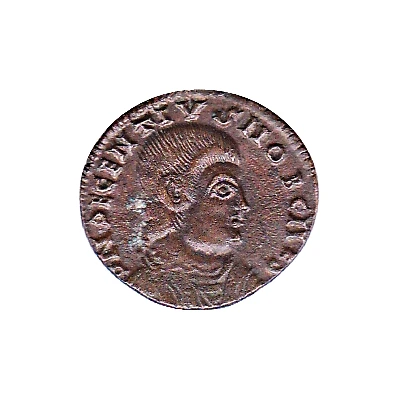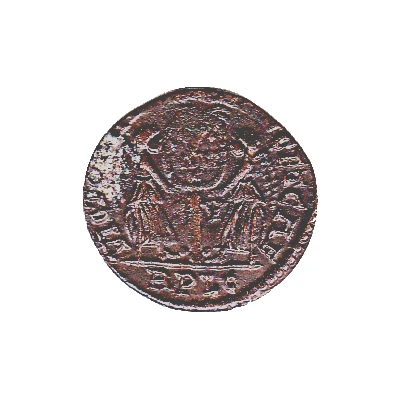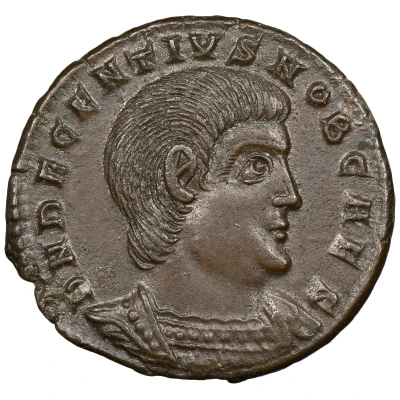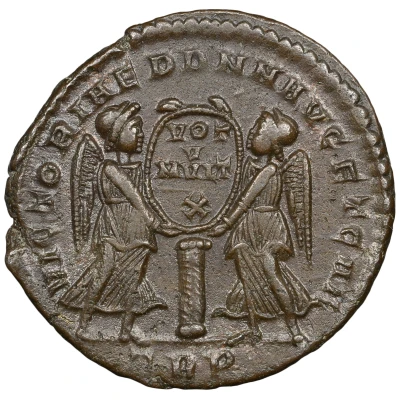


© JM
Follis - Decentius VICTORIAE DD NN AVG ET CAE; Lugdunum
350 year| Bronze | 2.91 g | 20.5 mm |
| Issuer | Usurpations of Western provinces (Roman Imperial usurpations) |
|---|---|
| Issuer | Usurpations of Western provinces (Roman Imperial usurpations) |
| Emperor | Decentius (Magnus Decentius) (350-353) |
| Emperor | Decentius (Magnus Decentius) (350-353) |
| Type | Standard circulation coin |
| Type | Standard circulation coin |
| Year | 350 |
| Year | 350 |
| Value | Follis (1⁄180) |
| Value | Follis (1⁄180) |
| Currency | Solidus, Reform of Constantine (AD 310/324 – 395) |
| Currency | Solidus, Reform of Constantine (AD 310/324 – 395) |
| Composition | Bronze |
| Composition | Bronze |
| Weight | 2.91 g |
| Weight | 2.91 g |
| Diameter | 20.5 mm |
| Diameter | 20.5 mm |
| Shape | Round (irregular) |
| Shape | Round (irregular) |
| Technique | Hammered |
| Technique | Hammered |
| Orientation | Medal alignment ↑↑ |
| Orientation | Medal alignment ↑↑ |
| Demonetized | Yes |
| Demonetized | Yes |
| Updated | 2024-10-10 |
| Numista | N#154905 |
|---|---|
| Rarity index | 89% |
Reverse
Two Victories standing face to face, both holding between them a shield inscribed VOT / V / MVLT / X in four lines; SV in the field; workshop and dispensary marks in exergue.
Script: Latin
Lettering:
VICTORIAE DD NN AVG ET CAE
VOT / V / MVLT / X
SV
RPLG
Edge
Plain
Comment
Decency was the brother of Magnence. He left for the Gauls in order to drive out the Germans; he gave them a battle and lost it. Magnence, defeated at Murse, called Decence to his aid; on the way, at Sens, he learned of the death of his brother; then, desperate and surrounded by enemies, he strangled himself with his belt in 353.Interesting fact
One interesting fact about the Follis - Decentius coin is that it was minted during a time of political instability in the Western Roman Empire, specifically during the Usurpations of Western provinces. Despite being issued by a usurper, the coin still bears the name and titles of the legitimate emperor, Constantius II, indicating that Decentius was trying to legitimize his rule by associating himself with the established imperial authority.

